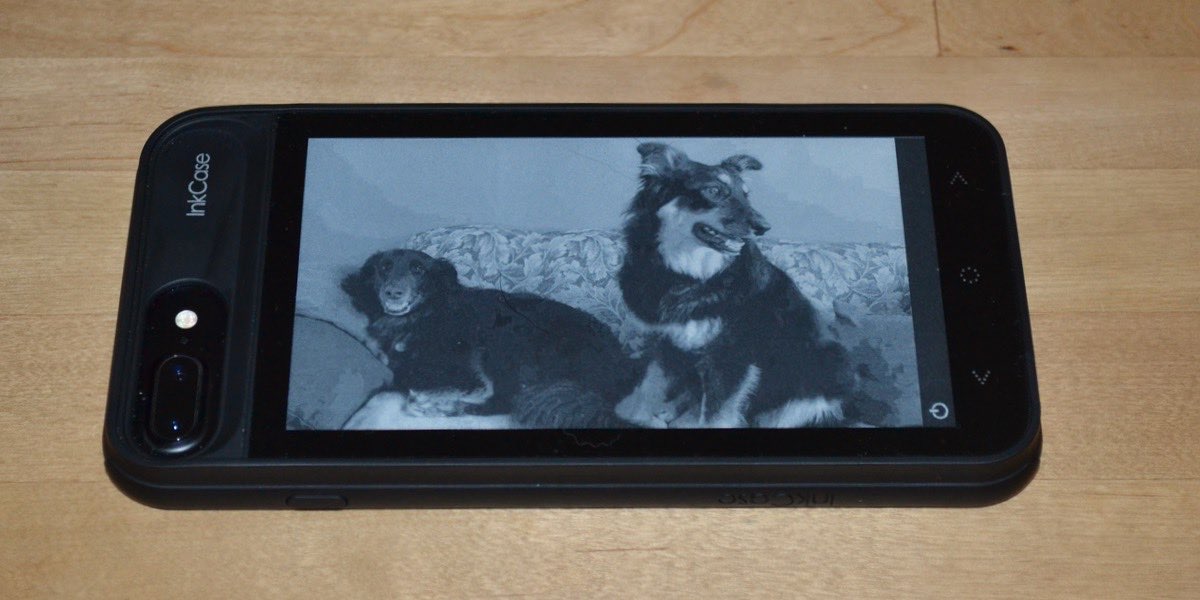A5 Logistics has just received a huge shipment: a dog bowl, a taco shell, a… well, we’re not sure what that is, but everything has to be stored somewhere so we can find it later!
What Is Wilmot’s Warehouse?
Wilmot’s Warehouse is a cooperative memory game for 2 to 6 players, ages 8 and up, and takes about 30 minutes to play. It retails for $34.99 and is available in stores or directly from the publisher. It’s based on a video game of the same name, though you don’t need to have any experience with the video game to enjoy the board game version.
Wilmot’s Warehouse was designed by David King, Rickey Haggett, and Richard Hogg, and published by CMYK, with art by Richard Hogg.

Wilmot’s Warehouse Components
Here’s what comes in the box:
- Warehouse board
- 150 Product tiles
- 150 Customer cards
- 30 Mandatory Idea cards
- Cloth bag
The warehouse board is primarily a big 7 x 7 grid, mostly black, with the days Monday through Friday listed along one edge. It has some graphics in the border to call to mind a warehouse floor, but primarily it’s just a space for you to place all of the tiles (and the black background reflects the look of the videogame). The back of the board has a big colorful grid of a bunch of the product tiles just as an extra, but it isn’t used for gameplay.

The product tiles are square tiles that have strange colorful graphics on them. Some of them look like identifiable objects—a cat’s paw, a pair of drumsticks, a macaroni—but many are just abstract shapes or patterns, and even the ones that look like objects are stylized enough that you could pretend they’re something else, which is key to the way the game works.
The customer cards depict various customers on the back (again, the folks who show up in the video game) and the fronts of the cards match all of the product tiles, so there’s one customer card for each product.

Mandatory idea cards have titles inspired by the corporate world like “Reorg” and “Team Building Exercise” and “Could have been an email.” You can tell from the back of the card whether it’s easy or hard, and then the front of the card gives instructions about what to do when that idea comes up.

The bag is large and made of sturdy canvas, with Wilmot’s smiling face printed on it. My only complaint at all about the components is the little tuckbox for the cards: because of the tight fit of the cards, the flap of the tuckbox was very hard to get open and has quickly shown some wear and tear (though it opens easily now that one flap got a little torn). UPDATE: I’ve been informed that CMYK has since updated all of their tuckboxes so they include a thumb notch, making them easier to open!
How to Play Wilmot’s Warehouse
You can download a copy of the rulebook here. There’s also an official how-to-play video made by Shut Up and Sit Down that does a great job of setting the tone of the game: terrible corporate culture, but funny!
The Goal
The goal of the game is to remember where you put all of the products so you can fulfill customer orders as quickly as possible.

Setup
Set up the board and make 5 stacks of 7 product tiles each (face-down), placing a stack by each day next to the board. Shuffle the mandatory idea cards and place one face-down on each day from Tuesday through Friday. Place the customer cards nearby. You will not need the rest of the mandatory idea cards or product tiles.
The most enthusiastic player goes first.
Gameplay
Players take turns being the shift supervisor, who has the ultimate say in where a tile is placed. The first tile must be placed in the center of the board, and then all tiles after that must be placed adjacent to an existing tile.

On your turn, turn over the top tile of the stack, show it to everyone, and then discuss where to place it. Once it’s placed, it is turned face-down and cannot be looked at again. Players are encouraged to come up with whatever system they want to remember where things are placed: make up stories that connect the items, or group items by type.
At the beginning of each day from Tuesday on, you’ll have to deal with the mandatory idea: flip the card over and read the instructions, which may require you to treat that day’s stack of tiles a little differently.

After Friday, all 35 tiles have been placed, and the customers show up. Separate the stack of customer cards so every player has roughly the same amount. When everyone is ready, start a stopwatch, and then everyone gets to look through their stack of cards, trying to match them with product tiles that have been placed in the warehouse. If you think you have a match, simply place the card face-up on top of the corresponding tile (but no peeking at the tiles yet!). Players can discuss and work together during this process, moving cards if necessary.

Game End
Once everyone is done placing cards, stop the stopwatch. Check all of the product tiles to see if you got everything right. For each product that was incorrectly matched (or wasn’t matched at all), you add 10 seconds to your time.
Compare your final time to the performance review chart on the back of the rulebook to find out how you did! Each tier on the chart also has a QR code that will send you to a video for a more in-depth performance review.

Why You Should Play Wilmot’s Warehouse
The overall concept of Wilmot’s Warehouse is pretty simple: put 35 weird little icons into a grid, and then try to remember where they are and what they look like at the end. It’s a lot of things to remember, particularly the weird little shapes that aren’t definitively one thing or another. But what I’ve been delightfully surprised by is how well the “memory palace” technique works: it doesn’t matter if the story you tell is completely bizarre and nonsensical, as long as it’s memorable.

In the game pictured above, we decided the center tile was a dart hitting the bullseye, so then there was confetti below that to celebrate. Above it is a sun and then some clouds, and above that is a colander because it drips water like a cloud, and then next to that is a mug because that’s also a container for liquid. Sure, it’s weird, but we got them all right!
In fact, so far in all of the games I’ve played, we’ve never had to lose time due to getting an incorrect delivery. However, we’re still not hitting the top tier yet, so obviously we need to keep practicing! Most of the games I’ve played have been between 2 and 4 players, though I have had one play of 6 people. More people means more brains to help remember the story, but sometimes the mandatory ideas can also become trickier to manage with more players. More people also means that you can divvy up the customer cards so everyone has fewer cards to manage—however, it’s still really important to look at what other people have, because quite often there are cases where not everyone has seen every product tile (due to the mandatory ideas), so you may think you’ve gone through your whole stack of cards but it turns out there are a few in there that you didn’t recognize.
The mandatory ideas are a lot of fun, and add some spice to the game. Some will have you place tiles in places other than on the board itself. There are a few that limit who gets to see each product tile. A few of them involve rotating the board itself, making everyone reorient the story in their heads. There’s a “Watercooler Break” idea that just says to take a short break to talk about your day—easy, right? But then it distracts you from the memory story. Very clever.

One thing I was very curious about was how Wilmot’s Warehouse would work for somebody with aphantasia—that is, the inability to visualize something in your brain. My teenage son has aphantasia, so we’ve talked a lot about it and what that means for things like drawing or designing something to make in the woodshop. When I make my Etch-a-Sketch drawings, I need to be able to imagine the whole drawing so I can plan how to route my lines, so it’s hard for me to figure out what it’s like not having that mental image. As it turns out, he still really enjoyed Wilmot’s Warehouse, too, and didn’t seem to have a harder time with it than the rest of us. Instead of picturing the various tiles, he focused on remembering the stories about them, and when he saw a customer card that matched, he could remember seeing it before and matching it up.
I think part of what makes Wilmot’s Warehouse so appealing to me is that I’m the sort of person who likes things to be organized, to sort things out in some fashion that makes sense to me. I remember where things are mostly by putting them in the same place all the time, so then if they get moved they’re just lost to me. But I also have an overwhelming number of books and board games, and my organizational system for those fell apart sometime around 2020 and has never quite recovered. Wilmot’s Warehouse is like a happy dream about staying organized, and each time I play I get a small sense of accomplishment. Maybe, at some point, I can make a memory palace of my board games to remember where they all are, too.
Although the game box says it’s for ages 8 and up since it’s a memory game (and a cooperative one at that), I think it’s quite possible to play with even younger kids—you may just need to weed out some mandatory idea cards if they’re too complicated. You can easily adjust the difficulty level by reducing or increasing the number of tiles in each day’s stack, too (maxing out at 9, or else there won’t be room for all of them). And since playing games and exercising your memory is supposed to be good for your brain as you age, this is also a game that may be a good one to play with older folks, too!
For more information, visit the CMYK website.
Click here to see all our tabletop game reviews.
![]() To subscribe to GeekDad’s tabletop gaming coverage, please copy this link and add it to your RSS reader.
To subscribe to GeekDad’s tabletop gaming coverage, please copy this link and add it to your RSS reader.
Disclosure: GeekDad received a copy of this game for review purposes.





